Mariner 7 launched
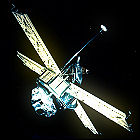 NASA and JPL launch the unmanned Mariner 7 space probe on a mission to Mars, where it will be joined by its recently-launched identical twin, Mariner 6. Mariner 7 will take five months to reach the red planet, but on a slightly faster trajectory it will arrive just days behind Mariner 6. Both will fly past Mars twice as close as the planet’s previous unmanned visitors.
NASA and JPL launch the unmanned Mariner 7 space probe on a mission to Mars, where it will be joined by its recently-launched identical twin, Mariner 6. Mariner 7 will take five months to reach the red planet, but on a slightly faster trajectory it will arrive just days behind Mariner 6. Both will fly past Mars twice as close as the planet’s previous unmanned visitors.
ESSA-9
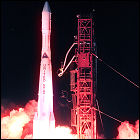 The recently-rechristened Environmental Sciences Service Administration launches, with the help of NASA, ESSA-9, the latest in a constellation of weather satellites. ESSA-9 is the last weather satellite to carry the ESSA designation, as the government reorganizes ESSA into a new agency, NOAA, the following year. ESSA-9 remains in service until 1972.
The recently-rechristened Environmental Sciences Service Administration launches, with the help of NASA, ESSA-9, the latest in a constellation of weather satellites. ESSA-9 is the last weather satellite to carry the ESSA designation, as the government reorganizes ESSA into a new agency, NOAA, the following year. ESSA-9 remains in service until 1972.
Mariner 6 launched
 NASA and JPL launch the unmanned Mariner 6 space probe on a mission to Mars, where it will be joined by its yet-to-be-launched identical twin, Mariner 7. Mariner 6 will take five months to reach the red planet, with its slightly faster sister ship mere days behind it, and will fly past Mars twice as close as the planet’s previous unmanned visitors.
NASA and JPL launch the unmanned Mariner 6 space probe on a mission to Mars, where it will be joined by its yet-to-be-launched identical twin, Mariner 7. Mariner 6 will take five months to reach the red planet, with its slightly faster sister ship mere days behind it, and will fly past Mars twice as close as the planet’s previous unmanned visitors.
N1 Flight #1
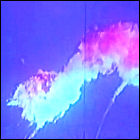 The gigantic Soviet-made N1 rocket, Sergei Korolev’s answer to the American Saturn V launcher, lifts off for the first time with an unmanned Zond spacecraft intended for a lunar flyby. Barely 70 seconds after leaving the pad, the N1 explodes at an altitude of seven miles, but the Zond space probe is salvaged by its escape tower rockets. The Soviet Union is no closer to safely sending a crew of cosmonauts to the moon.
The gigantic Soviet-made N1 rocket, Sergei Korolev’s answer to the American Saturn V launcher, lifts off for the first time with an unmanned Zond spacecraft intended for a lunar flyby. Barely 70 seconds after leaving the pad, the N1 explodes at an altitude of seven miles, but the Zond space probe is salvaged by its escape tower rockets. The Soviet Union is no closer to safely sending a crew of cosmonauts to the moon.
ESSA-8
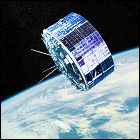 The recently-rechristened Environmental Sciences Service Administration launches, with the help of NASA, ESSA-8, the latest in a constellation of weather satellites operated by the former U.S. Weather Bureau. ESSA-8 is the first satellite in the ESSA constellation to boast a significant operational life span, watching Earth’s cloud patterns until it is shut down in 1976.
The recently-rechristened Environmental Sciences Service Administration launches, with the help of NASA, ESSA-8, the latest in a constellation of weather satellites operated by the former U.S. Weather Bureau. ESSA-8 is the first satellite in the ESSA constellation to boast a significant operational life span, watching Earth’s cloud patterns until it is shut down in 1976.
Orbiting Astronomical Observatory 2: The Stargazer
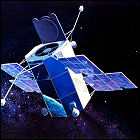 NASA launches the second Orbiting Astronomical Observatory satellite, given the nickname “Stargazer” after it successfully enters service. OAO-2 will remain in service for over four years, making significant contributions to the scientific understanding of comets and supernovae. Two separate experiments, including one designed and overseen by Dr. Fred Whipple, observe the sky in ultraviolet light from Earth orbit.
NASA launches the second Orbiting Astronomical Observatory satellite, given the nickname “Stargazer” after it successfully enters service. OAO-2 will remain in service for over four years, making significant contributions to the scientific understanding of comets and supernovae. Two separate experiments, including one designed and overseen by Dr. Fred Whipple, observe the sky in ultraviolet light from Earth orbit.
Zond 6
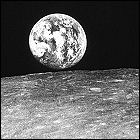 The Soviet Union launches an unmanned Soyuz 7K-L1 spacecraft, designated Zond 6, on a seven-day flight around the moon and back to Earth. Like Zond 5 before it, Zond 6 carries specimens of Earth animals and plants, but a rupture of the Soyuz pressure vessel results in these specimens being exposed to hard vacuum, resulting in instant death. Furthermore, the spacecraft opens and jettisons its parachutes too early, leaving it to slam into the ground at high speed. With continued glitches plaguing the Zond flights, Soviet mission planners aren’t confident enough in the 7K-L1 capsule to put cosmonauts in it for the next flight.
The Soviet Union launches an unmanned Soyuz 7K-L1 spacecraft, designated Zond 6, on a seven-day flight around the moon and back to Earth. Like Zond 5 before it, Zond 6 carries specimens of Earth animals and plants, but a rupture of the Soyuz pressure vessel results in these specimens being exposed to hard vacuum, resulting in instant death. Furthermore, the spacecraft opens and jettisons its parachutes too early, leaving it to slam into the ground at high speed. With continued glitches plaguing the Zond flights, Soviet mission planners aren’t confident enough in the 7K-L1 capsule to put cosmonauts in it for the next flight.
Zond 5
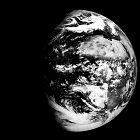 The Soviet Union launches Zond 5, a Soyuz 7K-L1 command & service module intended for flight around the moon. Rather than a cosmonaut crew, however, Zond 5 has biological specimens on board, including insects, plants, bacteria, and a pair of turtles – the first living creatures from Earth to orbit the moon. The specimens are all returned safely, though Zond 5 is the second consecutive Zond flight to lose attitude control after re-entry, splashing down in the Indian Ocean rather than making the customary propulsive return to Soviet soil. American intelligence agencies are aware of the mostly successful flight, and NASA alters the Apollo manned flight schedule to attempt to put men in orbit of the moon by the end of 1968.
The Soviet Union launches Zond 5, a Soyuz 7K-L1 command & service module intended for flight around the moon. Rather than a cosmonaut crew, however, Zond 5 has biological specimens on board, including insects, plants, bacteria, and a pair of turtles – the first living creatures from Earth to orbit the moon. The specimens are all returned safely, though Zond 5 is the second consecutive Zond flight to lose attitude control after re-entry, splashing down in the Indian Ocean rather than making the customary propulsive return to Soviet soil. American intelligence agencies are aware of the mostly successful flight, and NASA alters the Apollo manned flight schedule to attempt to put men in orbit of the moon by the end of 1968.
ESSA-7
 The recently-rechristened Environmental Sciences Service Administration launches, with the help of NASA, ESSA-7, the latest in a constellation of weather satellites operated by the former U.S. Weather Bureau. Like many of the other ESSA satellites, technical problems plague ESSA-7, and its camera system fails within a year. Engineering tests are carried out with ESSA-7 after it goes blind until the satellite is shut down early in 1970.
The recently-rechristened Environmental Sciences Service Administration launches, with the help of NASA, ESSA-7, the latest in a constellation of weather satellites operated by the former U.S. Weather Bureau. Like many of the other ESSA satellites, technical problems plague ESSA-7, and its camera system fails within a year. Engineering tests are carried out with ESSA-7 after it goes blind until the satellite is shut down early in 1970.
Luna 14
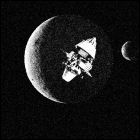 The Soviet Union launches unmanned space probe Luna 14 toward the moon, where it takes up a lunar orbit and returns scientific data on cosmic rays and gravitational variances. This is the last orbital mission of the Luna series; future Luna vehicles will be landers or landers with rovers, some with sample return capability.
The Soviet Union launches unmanned space probe Luna 14 toward the moon, where it takes up a lunar orbit and returns scientific data on cosmic rays and gravitational variances. This is the last orbital mission of the Luna series; future Luna vehicles will be landers or landers with rovers, some with sample return capability.
Zond 4
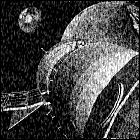 The Soviet Union launches an unmanned test flight of the Soyuz 7K-L1 command/service module, a spacecraft intended to orbit the moon with cosmonauts aboard. This unmanned flight, however, is designated Zond 4, and on its way back into Earth’s atmosphere it loses attitude control. With no precision guidance to ensure that Zond 4 will land on Soviet soil, Russian space authorities command the vehicle to self-destruct in mid-air to prevent their space technology from falling into another country’s hands. (The image accompanying this historical entry is computer-generated, and not a real photo.)
The Soviet Union launches an unmanned test flight of the Soyuz 7K-L1 command/service module, a spacecraft intended to orbit the moon with cosmonauts aboard. This unmanned flight, however, is designated Zond 4, and on its way back into Earth’s atmosphere it loses attitude control. With no precision guidance to ensure that Zond 4 will land on Soviet soil, Russian space authorities command the vehicle to self-destruct in mid-air to prevent their space technology from falling into another country’s hands. (The image accompanying this historical entry is computer-generated, and not a real photo.)
Surveyor 7 lands on the moon
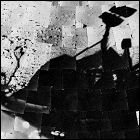 Surveyor 7, the last of NASA’s robotic moon landers, comes to a smooth landing on the moon’s Tycho Crater. Packed with more scientific instrument packages than any of its predecessors, Surveyor 7 studies the amount of dust kicked up by its retro rockets during landing, and lands closer to its planned target than any of the other Surveyors. Another experiment involves a test to see if a laser beam originated from Earth can be picked up by Surveyor’s cameras.
Surveyor 7, the last of NASA’s robotic moon landers, comes to a smooth landing on the moon’s Tycho Crater. Packed with more scientific instrument packages than any of its predecessors, Surveyor 7 studies the amount of dust kicked up by its retro rockets during landing, and lands closer to its planned target than any of the other Surveyors. Another experiment involves a test to see if a laser beam originated from Earth can be picked up by Surveyor’s cameras.
ESSA-6
 The recently-rechristened Environmental Sciences Service Administration launches, with the help of NASA, ESSA-6, the latest in a constellation of weather satellites operated by the former U.S. Weather Bureau. ESSA-6 remains in service until late 1969.
The recently-rechristened Environmental Sciences Service Administration launches, with the help of NASA, ESSA-6, the latest in a constellation of weather satellites operated by the former U.S. Weather Bureau. ESSA-6 remains in service until late 1969.
Surveyor 6 lands on the moon
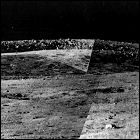 NASA’s robotic explorer Surveyor 6 lands safely on the moon, taking soil samples and pictures from the surface and, for the first time, testing an alpha-scattering surface analysis device of a type that would be included on many later missions to Mars. With the conclusion of Surveyor 6’s operations, the Surveyor probes have completed all of the tasks that were prerequisites to future Apollo manned moon missions. Surveyor 6 successfully lands in the same region of the moon that Surveyors 2 and 4 failed to reach.
NASA’s robotic explorer Surveyor 6 lands safely on the moon, taking soil samples and pictures from the surface and, for the first time, testing an alpha-scattering surface analysis device of a type that would be included on many later missions to Mars. With the conclusion of Surveyor 6’s operations, the Surveyor probes have completed all of the tasks that were prerequisites to future Apollo manned moon missions. Surveyor 6 successfully lands in the same region of the moon that Surveyors 2 and 4 failed to reach.
ATS-3
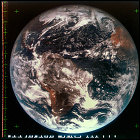 NASA launches Applications Technology Satellite-3, bundling new technology demonstrations onto a new weather satellite in geosynchronous orbit. Offering the first color view of Earth from that orbit, ATS-3 also relays weather data to specially equipped ground stations. It remains in service through 1975. This is the second ATS satellite to have a successful outcome, with ATS-2, ATS-4 and ATS-5 all faling victim to various kinds of launch failures.
NASA launches Applications Technology Satellite-3, bundling new technology demonstrations onto a new weather satellite in geosynchronous orbit. Offering the first color view of Earth from that orbit, ATS-3 also relays weather data to specially equipped ground stations. It remains in service through 1975. This is the second ATS satellite to have a successful outcome, with ATS-2, ATS-4 and ATS-5 all faling victim to various kinds of launch failures.
Mariner 5: return to Venus
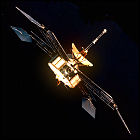 Launched four months before, NASA/JPL’s unmanned Mariner 5 space probe reaches the planet Venus. With its cameras removed to make way for other instrumentation, Mariner 5 provides valuable data on the makeup of the Venusian atmosphere and the probable conditions on the surface, corroborating what the Soviet Union’s successful landing of Venera 4 had found: a planet whose dense atmosphere traps heat and carbon dioxide, resulting in oven-like temperatures and ground-level pressures. NASA attempts to keep Mariner 5 functioning months after its flyby of Venus for tandem measurements of solar wind with Mariner 4, which has now passed beyond Martian orbit, but contact cannot be reliably maintained with Mariner 5 long enough to conduct the experiment.
Launched four months before, NASA/JPL’s unmanned Mariner 5 space probe reaches the planet Venus. With its cameras removed to make way for other instrumentation, Mariner 5 provides valuable data on the makeup of the Venusian atmosphere and the probable conditions on the surface, corroborating what the Soviet Union’s successful landing of Venera 4 had found: a planet whose dense atmosphere traps heat and carbon dioxide, resulting in oven-like temperatures and ground-level pressures. NASA attempts to keep Mariner 5 functioning months after its flyby of Venus for tandem measurements of solar wind with Mariner 4, which has now passed beyond Martian orbit, but contact cannot be reliably maintained with Mariner 5 long enough to conduct the experiment.
Surveyor 5 lands on the moon
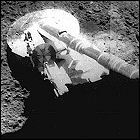 Despite an in-flight fuel pressure glitch that threatens to make this the third failure for the Surveyor program, Surveyor 5 successfully touches down in the moon’s Sea of Tranquility thanks to remote in-flight reprogramming by NASA engineers. Among its objectives on the lunar surface is a precise measurement of the elements comprising the lunar soil.
Despite an in-flight fuel pressure glitch that threatens to make this the third failure for the Surveyor program, Surveyor 5 successfully touches down in the moon’s Sea of Tranquility thanks to remote in-flight reprogramming by NASA engineers. Among its objectives on the lunar surface is a precise measurement of the elements comprising the lunar soil.
Voyager mission cancelled
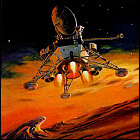 After data returned by JPL’s Mariner spacecraft reveals that – as JPL predicted – Mars has a thin atmosphere and very low atmospheric pressure, plans for a Saturn V-launched orbiter with two 10,000-pound Mars landers are scuttled. The Voyager Mars mission, not expected to launch until 1973, proved too complex and costly for the current state of the art. The Voyager name will later be bestowed upon a pair of Mariner spacecraft exploring beyond the orbit of Mars, while the Voyager concept will later be scaled down to a more feasible and cost-effective orbiter/lander combination called Viking.
After data returned by JPL’s Mariner spacecraft reveals that – as JPL predicted – Mars has a thin atmosphere and very low atmospheric pressure, plans for a Saturn V-launched orbiter with two 10,000-pound Mars landers are scuttled. The Voyager Mars mission, not expected to launch until 1973, proved too complex and costly for the current state of the art. The Voyager name will later be bestowed upon a pair of Mariner spacecraft exploring beyond the orbit of Mars, while the Voyager concept will later be scaled down to a more feasible and cost-effective orbiter/lander combination called Viking.
The last of the Lunar Orbiters
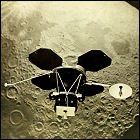 NASA’s final Lunar Orbiter satellite is sent to the moon, with a goal of completing the mapping of the moon’s surface left unfinished by mechanical issues with its predecessor. Lunar Orbiter 5 completes the mapping of the lunar far side and helps engineers and scientists determine signal coverage from the Earth-based tracking stations that will help NASA stay in contact with future Apollo missions to the moon.
NASA’s final Lunar Orbiter satellite is sent to the moon, with a goal of completing the mapping of the moon’s surface left unfinished by mechanical issues with its predecessor. Lunar Orbiter 5 completes the mapping of the lunar far side and helps engineers and scientists determine signal coverage from the Earth-based tracking stations that will help NASA stay in contact with future Apollo missions to the moon.
Surveyor 4 doesn’t land on the moon
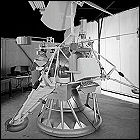 For the second time, one of NASA’s robotic Surveyor space probes fails to make it to the moon intact. Launched three days before, Surveyor 4 – which is, coincidentally, targeted to land in roughly the same area that previous lander Surveyor 2 failed to reach – is mere minutes from the lunar surface when contact is lost. There is no means of determining what has caused the failure, though the most likely hypothesis is an explosion of the solid fuel rockets intended to slow Surveyor 4’s descent prior to landing.
For the second time, one of NASA’s robotic Surveyor space probes fails to make it to the moon intact. Launched three days before, Surveyor 4 – which is, coincidentally, targeted to land in roughly the same area that previous lander Surveyor 2 failed to reach – is mere minutes from the lunar surface when contact is lost. There is no means of determining what has caused the failure, though the most likely hypothesis is an explosion of the solid fuel rockets intended to slow Surveyor 4’s descent prior to landing.
Mariner 5 launched
 A near-identical twin of NASA/JPL’s unmanned Mariner 4 Mars probe, Mariner 5 lifts off en route to the planet Venus. Though the space probe’s architecture is similar to that of Mariner 4, Mariner 5 is modified to include solar shades to keep parts of the spacecraft cool, a problem which doesn’t exist at Mars. Mariner 5 takes almost exactly four months to reach Venus.
A near-identical twin of NASA/JPL’s unmanned Mariner 4 Mars probe, Mariner 5 lifts off en route to the planet Venus. Though the space probe’s architecture is similar to that of Mariner 4, Mariner 5 is modified to include solar shades to keep parts of the spacecraft cool, a problem which doesn’t exist at Mars. Mariner 5 takes almost exactly four months to reach Venus.
Venera 4
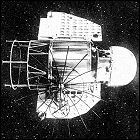 The Soviet Union launches Venera 4, a space probe dispatched to the planet Venus. Venera 4 is equipped with a landing probe which it deposits into the planet’s dense atmosphere in October, and the probe’s findings stun scientists on Earth who had long considered Venus a near-twin of Earth: the atmosphere is predominantly carbon dioxide, with minimal oxygen and a pressure nearly 100 times Earth’s atmospheric pressure at sea level. The temperature within the Venusian atmosphere is found to soar past 800 degrees Fahrenheit, presenting a challenge for designers of the next round of vehicles to visit the planet. The Venera 4 landing probe is not equipped with cameras, and contact is lost with it before contact is made with the ground.
The Soviet Union launches Venera 4, a space probe dispatched to the planet Venus. Venera 4 is equipped with a landing probe which it deposits into the planet’s dense atmosphere in October, and the probe’s findings stun scientists on Earth who had long considered Venus a near-twin of Earth: the atmosphere is predominantly carbon dioxide, with minimal oxygen and a pressure nearly 100 times Earth’s atmospheric pressure at sea level. The temperature within the Venusian atmosphere is found to soar past 800 degrees Fahrenheit, presenting a challenge for designers of the next round of vehicles to visit the planet. The Venera 4 landing probe is not equipped with cameras, and contact is lost with it before contact is made with the ground.
Lunar Orbiter 4 launched
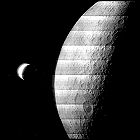 NASA’s fourth Lunar Orbiter satellite lifts off for its one-week trek to the moon. Placed into an orbit that takes it over the moon’s poles instead of its equator, Lunar Orbiter 4 is able to map virtually all of the near side of the moon over a period of two weeks. Plans to have Lunar Orbiter 4 map the far side are thwarted by mechanical failures and problems with the probe’s camera optics.
NASA’s fourth Lunar Orbiter satellite lifts off for its one-week trek to the moon. Placed into an orbit that takes it over the moon’s poles instead of its equator, Lunar Orbiter 4 is able to map virtually all of the near side of the moon over a period of two weeks. Plans to have Lunar Orbiter 4 map the far side are thwarted by mechanical failures and problems with the probe’s camera optics.
ESSA-5
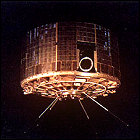 The recently-rechristened Environmental Sciences Service Administration launches, with the help of NASA, ESSA-5, the latest in a constellation of weather satellites operated by the former U.S. Weather Bureau. Though suffering from a few technical glitches and system failures, ESSA-5 remains in service until late 1968.
The recently-rechristened Environmental Sciences Service Administration launches, with the help of NASA, ESSA-5, the latest in a constellation of weather satellites operated by the former U.S. Weather Bureau. Though suffering from a few technical glitches and system failures, ESSA-5 remains in service until late 1968.
Surveyor 3 lands on the moon
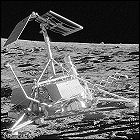 NASA’s robotic explorer Surveyor 3 touches down safely on the moon, snapping pictures and – with an extendable scoop arm – gathering and analyzing samples of lunar soil. Its landing site, a lunar plain called the Ocean of Storms, becomes the site of a unique long-term experiment: in two years, Surveyor 3 will become the first (and, to date, only) unmanned spacecraft to be personally inspected by humans after its landing.
NASA’s robotic explorer Surveyor 3 touches down safely on the moon, snapping pictures and – with an extendable scoop arm – gathering and analyzing samples of lunar soil. Its landing site, a lunar plain called the Ocean of Storms, becomes the site of a unique long-term experiment: in two years, Surveyor 3 will become the first (and, to date, only) unmanned spacecraft to be personally inspected by humans after its landing.
Lunar Orbiter 3 launched
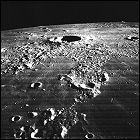 The third of five Lunar Orbiter satellites is launched to the moon by NASA, and once in orbit, Lunar Orbiter 3 achieves an unmanned spaceflight first: it’s the first unmanned space probe to image another unmanned space probe (in this case, Surveyor 1, which has been on the moon since 1966). A mechanical fault prevents Lunar Orbiter 3 from returning roughly a quarter of its images to Earth.
The third of five Lunar Orbiter satellites is launched to the moon by NASA, and once in orbit, Lunar Orbiter 3 achieves an unmanned spaceflight first: it’s the first unmanned space probe to image another unmanned space probe (in this case, Surveyor 1, which has been on the moon since 1966). A mechanical fault prevents Lunar Orbiter 3 from returning roughly a quarter of its images to Earth.
ESSA-4
 The recently-rechristened Environmental Sciences Service Administration launches, with the help of NASA, ESSA-4, the latest in a constellation of weather satellites operated by the former U.S. Weather Bureau. One of ESSA-4’s cameras fails to activate, and the satellite remains in service for less than one year.
The recently-rechristened Environmental Sciences Service Administration launches, with the help of NASA, ESSA-4, the latest in a constellation of weather satellites operated by the former U.S. Weather Bureau. One of ESSA-4’s cameras fails to activate, and the satellite remains in service for less than one year.
Luna 13
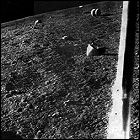 The Soviet Union launches unmanned space probe Luna 13 toward the moon, where it becomes the third space vehicle to successfully make a soft landing on the lunar surface. Larger than its Soviet predecessor, Luna 9, Luna 13 measures the temperature, radiation, and hardness of the moon’s surface, all useful information to have in advance of a manned landing. After operating on the lunar surface for four days, the Luna 13 lander’s batteries are exhausted and the mission is over.
The Soviet Union launches unmanned space probe Luna 13 toward the moon, where it becomes the third space vehicle to successfully make a soft landing on the lunar surface. Larger than its Soviet predecessor, Luna 9, Luna 13 measures the temperature, radiation, and hardness of the moon’s surface, all useful information to have in advance of a manned landing. After operating on the lunar surface for four days, the Luna 13 lander’s batteries are exhausted and the mission is over.
ATS-1
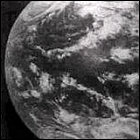 NASA launches Aplications Technology Satellite-1, the first of a new series of experimental satellites with a goal of combining the functions of existing weather and communication satellites, with other technology demonstrations added on. ATS-1 transmits the first-ever view of the entire face of Earth visible from geosynchronous orbit, as well as testing some of the first satellite navigation technology. ATS-1’s position in orbit also proves ideal for the North-America-to-Australia link during 1967’s global Our World broadcast. ATS-1 remains in serice for almost exactly 12 years.
NASA launches Aplications Technology Satellite-1, the first of a new series of experimental satellites with a goal of combining the functions of existing weather and communication satellites, with other technology demonstrations added on. ATS-1 transmits the first-ever view of the entire face of Earth visible from geosynchronous orbit, as well as testing some of the first satellite navigation technology. ATS-1’s position in orbit also proves ideal for the North-America-to-Australia link during 1967’s global Our World broadcast. ATS-1 remains in serice for almost exactly 12 years.
Lunar Orbiter 2 launched
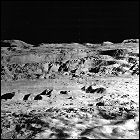 The second in NASA’s series of Lunar Orbiter satellites lifts off from Earth on a course for the moon. Lunar Orbiter 2 spends a full week examining the surface of the moon from orbit, sending back high-resolution TV images for mapping purposes, and to help NASA scientists and engineers select suitable landing sites for the upcoming Apollo program. Lunar Orbiter 2’s orbital path allows it to image a particularly promising plain in the Sea of Tranquility…
The second in NASA’s series of Lunar Orbiter satellites lifts off from Earth on a course for the moon. Lunar Orbiter 2 spends a full week examining the surface of the moon from orbit, sending back high-resolution TV images for mapping purposes, and to help NASA scientists and engineers select suitable landing sites for the upcoming Apollo program. Lunar Orbiter 2’s orbital path allows it to image a particularly promising plain in the Sea of Tranquility…